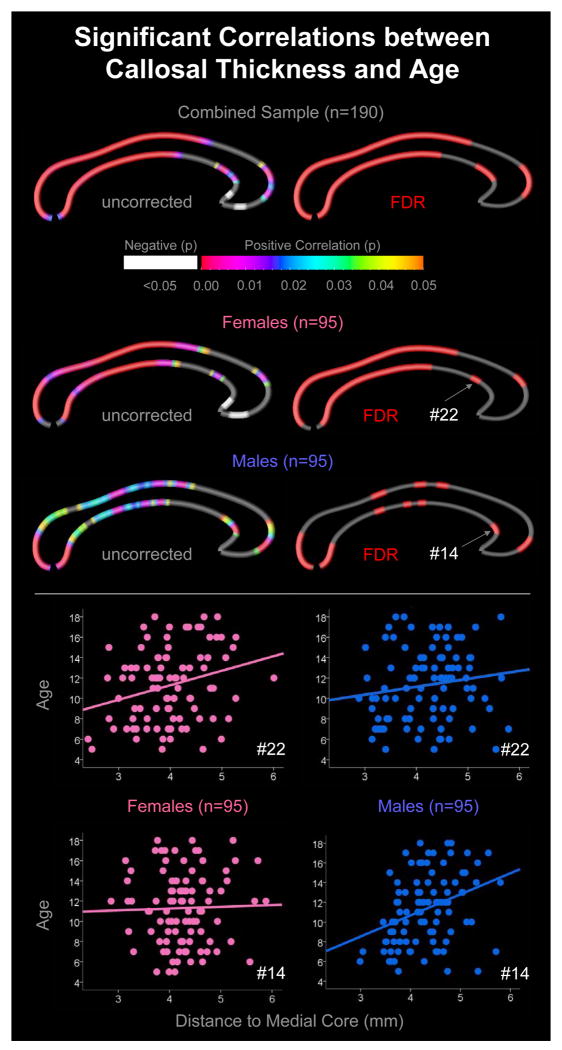Figure 1.
Significant correlations between callosal thickness and age across the ages 5-18 years. Left Panels: The color bar encodes the uncorrected significance (p) of positive correlations. White regions indicate significant negative correlations. Right Panels: Callosal maps indicate in red where significant correlations survived FDR-corrections. Bottom Panels: Scatter plots illustrate examples of sex-specific correlations at the most significant callosal surface point within the anterior third in females (point #22) and in males (point #14).

